The weird and wonderful wearables of CES 2020
Strap yourself in – you're in for a wild ride
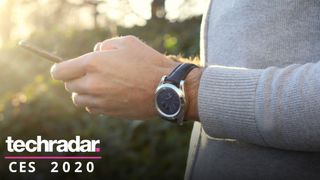
Another CES is coming to a close, and this year has been an absolute doozy for wearable tech. The space has grown exponentially over the past five years, with the wearables and health section now a star player of the expo.
In Vegas this year, wearables were moving well beyond the humble fitness band; some are evolving into more serious health tracking devices, while others are standing out from the crowd with other unique abilities.
We've already rounded up the best wearables of CES 2020, but we’ve also put together a list of the more unique and unusual devices we tried at the show. Have at it.
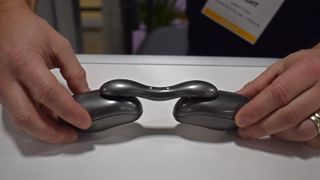
Weird: Umay Rest
Eureka park, a startup arena nestled in the Sands Expo of Las Vegas, has become a goldmine for innovative health tech projects. There this year was Edmonton-based Umay Care, showing off a rather unusual meditation device.
What looks like a boomerang from the year 3000 is actually a 'thermal meditation' wearable to reduce the negative effects of screen time. The device sits over your eyes and is designed to help soothe them using thermal effects - it’s essentially a hi-tech face mask for curing dry-eye. It even has a cooling mode to reduce eye puffiness from lack of sleep.
It also emits small vibration to which you can sync your breathing rhythms, and each session lasts just three minutes or six minutes depending on how much time you need. Its creators tell us they envision people taking short breaks from the computer throughout the day to recharge using the Umay Rest, and again just before bed.
The Umay Rest is expected to ship this summer, but the company may sell direct to optometrists first.
Get the best Black Friday deals direct to your inbox, plus news, reviews, and more.
Sign up to be the first to know about unmissable Black Friday deals on top tech, plus get all your favorite TechRadar content.
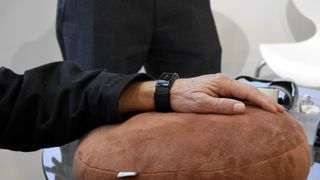
Wonderful: H2-BP band
One of the next 'big things' for wearables will be blood pressure tracking. This has traditionally done using an inflating cuff as optical sensors can’t deduce the same information. Enter the H2-BP, a wristband blood pressure monitor that places a pump inside a fitness tracker.
Barely bigger than your Fitbit, this monitor takes pressure readings throughout the day from a single signal of the radial artery, while ensuring the ulnar artery remains unblocked so that blood circulation doesn’t get cut off.
Data is then sent to the companion app, where you’ll be able to view immediate readings as well as trends over time.
H2CARE, the company behind it, told TechRadar it’s confident it will get FDA clearance in March. That would be huge. The closest thing right now is Omron’s HeartGuide watch, but that’s much less discreet.
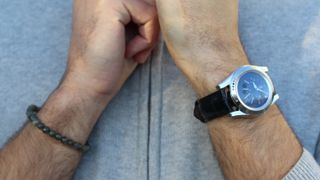
Weird: IEVA Time-C
IEVA says its smartwatch will “slow the signs of aging and the passage of time”. Sadly, as we discovered, this French startup isn’t bending the laws of physics, but it will track a bunch of environmental factors including CO2, VOC, noise levels, ambient temperature, humidity, luminosity, and sun exposure - all the things that could be having a bad effect on your health, and by extension shortening your lifespan.
The watch, a chunky timepiece made of brass and stainless steel, can whirr its hands around to display limited information about some of the above factors, but for the most part you’ll need to dip into the app.
It’s no coincidence that IEVA’s founder is Jean-Michael Karam, who also owns French skincare brand IOMA and probably hopes one will feed into the other. IEVA already has a device on the market that tracks some of the above, but only now is it putting it into a watch – and says it will be available to buy in France later this year.
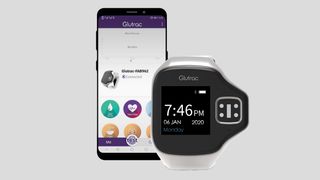
Wonderful: Add Care Glutrac
We’re adding a caveat here that, while yes, potentially wonderful, the Glutrac has yet to prove good on its promise: non-invasive continuous glucose monitoring. It’s something wearable tech makers dream of one day cracking, and considering more than 29 million people in the US have diabetes, you can venture a guess as to why.
But achieving the level of accuracy to not only monitor glucose levels without a prick. The closest thing we have right now are sensors that enter the interstitial fluid, but these still require a small amount of penetration.
The Glutrac watch claims to be able to do it from optical sensors alone. However, the Hong Kong company would need to prove upmost accuracy to ever get any sort of FDA approval, and that’s a huge 'if'. Still, it’s encouraging to see companies taking a shot.
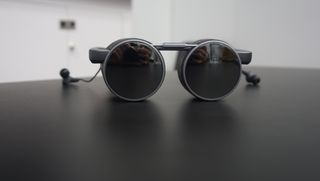
Weird: Panasonic VR glasses
We’re filing this under 'weird' with intention to move it to the 'wonderful' folder if it ever becomes a real product. Panasonic’s VR goggles look totally steampunk and produce ultra-sharp images (they're the first VR headset to support HDR) all in a compact pair of virtual reality goggles that make the Oculus Rift look like a hunk of junk.
But Panasonic needs to decide where it wants to take these. The company told us it’s open to all sorts of applications beyond PC VR, including adding augmented reality cameras for use outside, or throwing in onboard storage so you can watch Netflix on the go.
But it will inevitably have to choose a path. They could certainly give Magic Leap a run for its money in the AR space, where augmented reality glasses are still struggling to find mainstream adoption. Even if it stays focused on VR alone, these could be a wonderful alternative to high-end visors like the Valve Index – but likely priced just as highly.
- Check out all of TechRadar's CES 2020 coverage. We're live in Las Vegas to bring you all the breaking tech news and launches, plus hands-on reviews of everything from 8K TVs and foldable displays to new phones, laptops and smart home gadgets.
Hugh Langley is the ex-News Editor of TechRadar. He had written for many magazines and websites including Business Insider, The Telegraph, IGN, Gizmodo, Entrepreneur Magazine, WIRED (UK), TrustedReviews, Business Insider Australia, Business Insider India, Business Insider Singapore, Wareable, The Ambient and more.
Hugh is now a correspondent at Business Insider covering Google and Alphabet, and has the unfortunate distinction of accidentally linking the TechRadar homepage to a rival publication.
Most Popular



